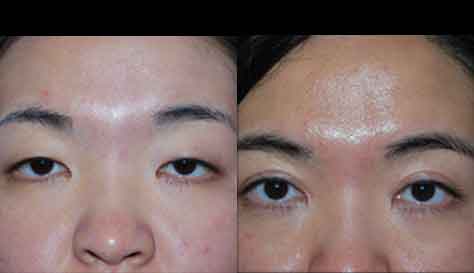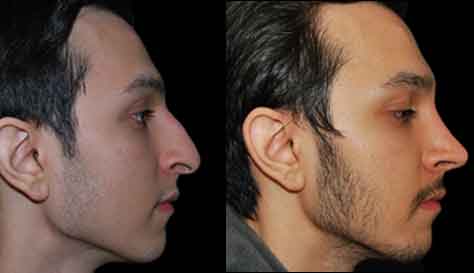Teenage Rhinoplasty
Conveniently located to serve the areas of New Jersey and New York
Dr. Ovchinsky is a nationally recognized expert in Rhinoplasty. For more information about this procedure please view our Rhinoplasty page.
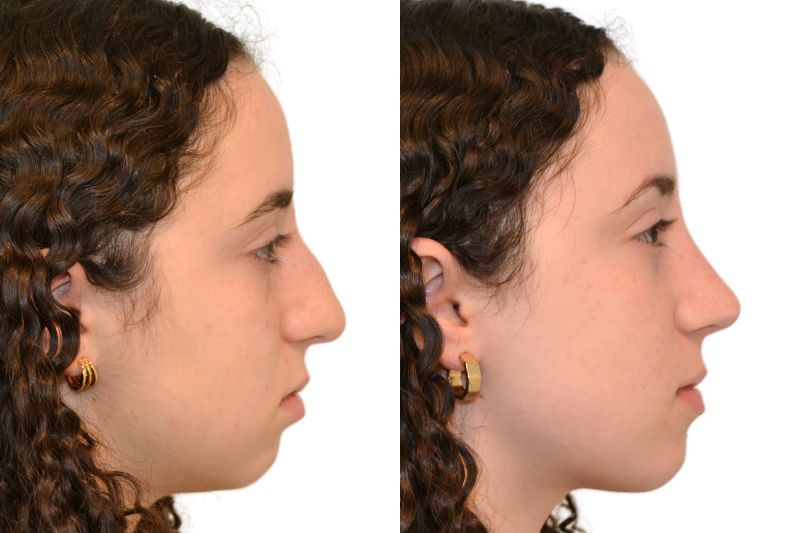
Teenage rhinoplasty, or a teenage “nose job,” is a cosmetic surgical procedure that enhances the functional and aesthetic features of a young patient’s nose. Physical appearance plays a key role in how confident teenagers feel in the world at large. For many teens, a nose that is too large, asymmetrical, or misshapen can be a source of teasing, embarrassment, and discomfort. This surgery helps to correct nasal appearance while maintaining the proportional balance of a younger face, providing emotional support to this extremely sensitive age group.
Dr. Alexander Ovchinsky is double board-certified in facial plastic and reconstructive surgery. He is one of the leading rhinoplasty surgeons in the United States and specializes in multiple types of rhinoplasty catering to specific demographics. Dr. Ovchinsky creates customized procedure plans and approaches to address each individual patient’s desires.
Schedule your appointment with us today to learn more about teenage rhinoplasty. You may also call our Short Hills office at (973) 379-0101 or our Brooklyn location at (718) 646-1234 to get started.
Contents
- 1 Teenage Rhinoplasty Explained
- 2 Benefits of Teenage Rhinoplasty
- 3 Ideal Candidates
- 4 Personal Consultation with Dr. Ovchinsky
- 5 Preparation
- 6 After Teenage Rhinoplasty
- 7 Results
- 8 How Much Does a Teenage Rhinoplasty Cost in New Jersey?
- 9 FAQ
- 9.1 Is it safe for minors to undergo rhinoplasty?
- 9.2 How long does a teenage rhinoplasty procedure take?
- 9.3 Are there any dietary restrictions following teenage rhinoplasty?
- 9.4 When will my stitches and cast be taken out after a rhinoplasty?
- 9.5 How soon will I be able to exercise after rhinoplasty surgery?
- 10 References
Teenage Rhinoplasty Explained
Rhinoplasty is the most common cosmetic surgery performed in teens. (1) For many years, the American Society of Plastic Surgery (ASPS) has indicated that plastic surgery among young people is on the rise, with more than five times the number of teenage patients receiving treatments today than fifteen years ago. As one of the most complicated plastic surgery procedures, teenage patients must wait until their nasal growth plates are fully developed before they undergo rhinoplasty. (2) That being said, if a teenage patient meets all criteria, this procedure can greatly improve their quality of life and comfort levels.
To perform this procedure, Dr. Ovchinsky uses an “open” or “closed” approach to undermine the skin of the nose and navigate toward the internal nasal structures. Depending on the patient’s anatomy, from there he may remove bone and/or cartilage to smooth the nasal bridge. Some patients want to correct their nasal deviation or better define nasal tip, whereas others also need their deviated septum corrected. He addresses and changes different nasal features within the surgery to achieve a symmetrical and aesthetically pleasing nose shape and to improve its functionality.
Why Do Teenagers Get Nose Jobs?
Along with the insecurities and fears that are so common in adolescence, having a “bad nose” can make some teens particularly self-conscious and unhappy about their appearance. More than almost any other age group, teenagers are subjected to the pressure of their peers. Some parents may feel conflicted about allowing their child to undergo plastic surgery, wondering if it sends them the wrong message.
Confidence during adolescence is essential for normal emotional and social development. Deciding to undergo rhinoplasty is an extremely personal decision that ultimately comes down to whether or not you will be saving your child more emotional scarring by allowing him or her to undergo the procedure.
Benefits of Teenage Rhinoplasty
This procedure can lead to the:
- Correction of a large nasal hump
- Correction of nasal deviation
- Narrowing of a wide nasal bridge
- Correction of a droopy tip
- Improvement of tip definition
- Restoration of nasal symmetry
- Improvement of a patient’s breathing
- Confidence and self-esteem boost
Ideal Candidates
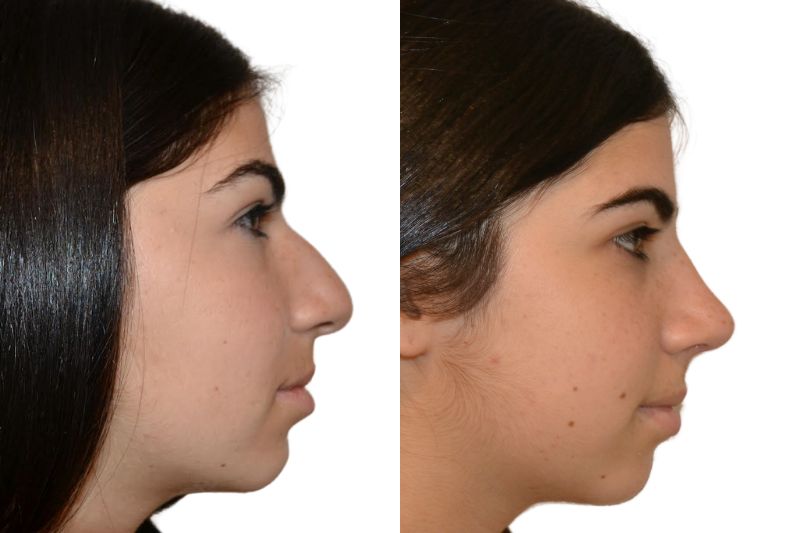
Teenage rhinoplasty should typically be performed on girls and boys 15 years or older. Waiting until this age ensures that their nose and other facial features have finished growing. The ideal candidate for teenage rhinoplasty is in good overall health with no underlying medical conditions that could affect their surgery or recovery. They should also be willing to arrange time out of their busy schedule to recover from surgery. It is important that the teenager is making a mature decision to consider rhinoplasty and has thought carefully about the motivations and consequences.
When To Schedule Teenage Rhinoplasty
In Dr. Ovchinsky’s experience, teens like to take advantage of the summer and winter breaks to undergo surgery, so advance planning is important. We would be delighted to see you at a consultation in our office and to have an opportunity to create the nose you have always dreamed of!
Personal Consultation with Dr. Ovchinsky
At Plastic Surgery of Short Hills, we will meet with you privately to discuss your child’s cosmetic goals and how to achieve them with rhinoplasty. Dr. Ovchinsky will perform a physical examination of the nose and inquire about your medical history. Next, he will choose the appropriate technique and explain it in detail before creating a customized treatment plan. The consultation will also provide time to ask questions and voice any concerns you may have regarding your surgery. After your meeting, a member of our staff will assist you with scheduling your teenage rhinoplasty.
Preparation
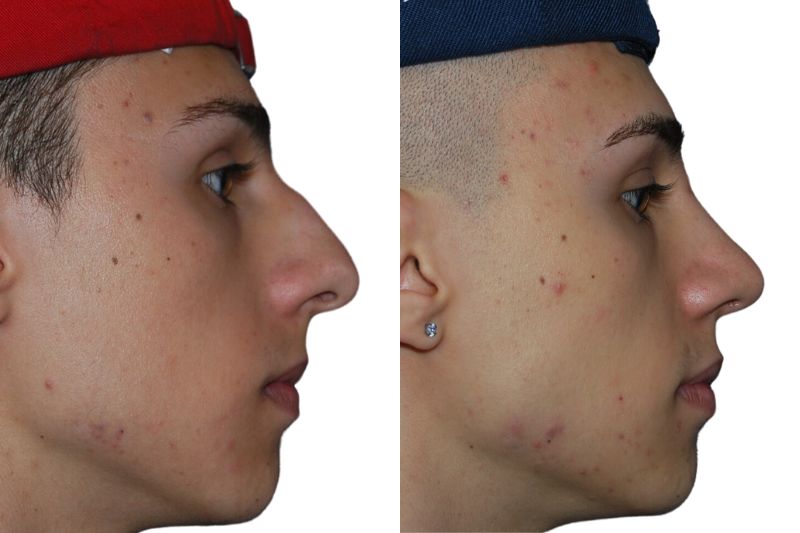
You will have a preoperative appointment well in advance of your surgery when we will review all medications with you. You may continue taking most routine medications up until the morning of surgery with a small sip of water. If you are on “blood thinners,” we ask that you stop them approximately one week before surgery. We also ask that you avoid certain over-the-counter and herbal medications. You have to completely quit smoking at least two weeks before surgery.
Before rhinoplasty, we recommend that you create a comfortable space to relax and recover in your home. That could include making easy-to-prepare meals and gathering forms of entertainment. On the day of the surgery, you should avoid eating or drinking for 8 hours beforehand to avoid negative interactions after general anesthesia use.
After Teenage Rhinoplasty
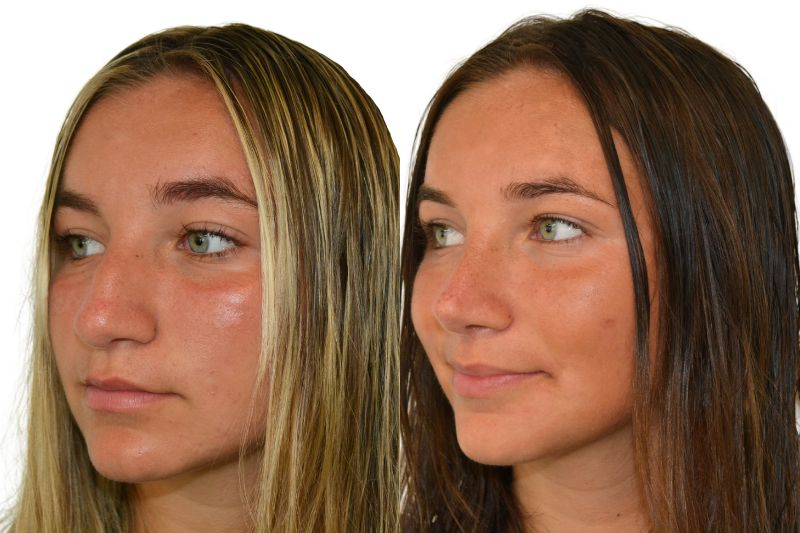
You will go to the recovery room for a few hours until you are fully recovered from anesthesia. Once you are stable, a family member or a friend can take you home (or to a hotel). You should stay relaxed for the first few days. Keep your head elevated when in bed to help with faster resolution of swelling, and avoid touching or blowing your nose at this time.
You should begin to start walking, eating, and using the restroom the day after surgery. Your activity can slowly increase each day but it will take up to 2 weeks before you start to feel like your old self again. You should avoid any strenuous activity for 4 weeks. Dr. Ovchinsky prescribes medications which usually include antibiotics, pain medicine, antibiotic ointment for the incisions, nasal saline spray and occasionally anti-nausea medications. Please take these as directed.
There is typically a 7-10 day healing period after rhinoplasty, which may require you to miss time in school. You will also have to avoid certain activities like contact sports and P.E. classes for two months. If this is a concern, you may wish to schedule your rhinoplasty during the summer to ensure adequate healing time.
Results
You may see the difference right away, and more so once the swelling goes down within the first one to two months. As with any surgical procedure, it takes anywhere from 6 to 12 months for the results to become final.
In our experience, many friends or classmates of our teenage rhinoplasty patients do not realize that the patient had a nose job. Most may think he or she just “looks great”, had a haircut or a nice tan, and are not able to figure out what is different. Some close friends, who may know about the surgery, do not usually make a big deal about it. And let’s face it- some of them probably wish they could have the surgery themselves too! In fact, some friends of our teen rhinoplasty patients come to our office after they see the results. More importantly, our teen patients are usually the ones who notice the difference in their appearance and feel a boost in self-confidence.
You can find most of the answers to your questions about rhinoplasty surgery on our website under “Rhinoplasty FAQ.”
How Much Does a Teenage Rhinoplasty Cost in New Jersey?
Dr. Ovchinsky provides a customized treatment plan and total cost to each patient during their private consultation. He explains the process from beginning to end to completely prepare you for your teenage rhinoplasty procedure.
To book an appointment at Plastic Surgery of Short Hills, fill out our convenient contact form or call us at:
(718) 646-1234: Brooklyn, NY
(973) 379-0101: Short Hills, NJ
FAQ
Is it safe for minors to undergo rhinoplasty?
As long as the patient is over 15 years old and making a sound decision, rhinoplasty is a perfectly safe procedure to perform on teenagers.
How long does a teenage rhinoplasty procedure take?
The duration of the procedure varies depending on the complexity of each case and the specific technique employed. Generally, teenage rhinoplasty surgery takes between one to three hours.
Are there any dietary restrictions following teenage rhinoplasty?
No. Patients can eat whatever they want. Advance your diet from liquids (fruit juice, milkshake, etc.) to soft food (pudding, macaroni and cheese, mashed potatoes and gravy, oatmeal, pasta) to solids as tolerated. To prevent dehydration, please drink as much juice and nutritional fluid as possible.
When will my stitches and cast be taken out after a rhinoplasty?
Stitches and nasal cast are normally removed around one week after your surgery. This happens during the first follow-up appointment.
How soon will I be able to exercise after rhinoplasty surgery?
It’s recommended that patients do not return to exercise for at least three weeks after their procedure.
References
- Kalantar-Hormozi A, Ravar R, Abbaszadeh-Kasbi A, Rita Davai N. Teenage Rhinoplasty. World Journal of Plastic Surgery. 2018;7(1):97-102. Accessed June 11, 2024. https://www.ncbi.nlm.nih.gov/pmc/articles/PMC5890372/
- American Society of Plastic Surgeons. Briefing Paper: Plastic Surgery for Teenagers. American Society of Plastic Surgeons. Published 2015. Accessed June 11, 2024. https://www.plasticsurgery.org/news/briefing-papers/briefing-paper-plastic-surgery-for-teenagers




